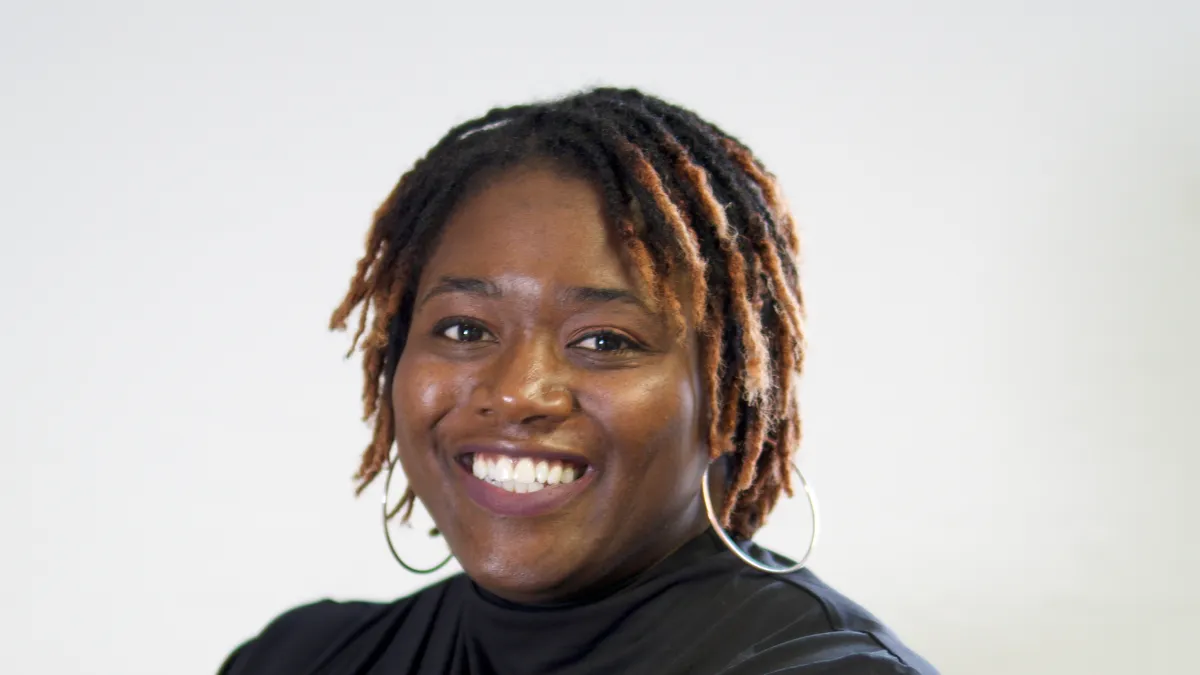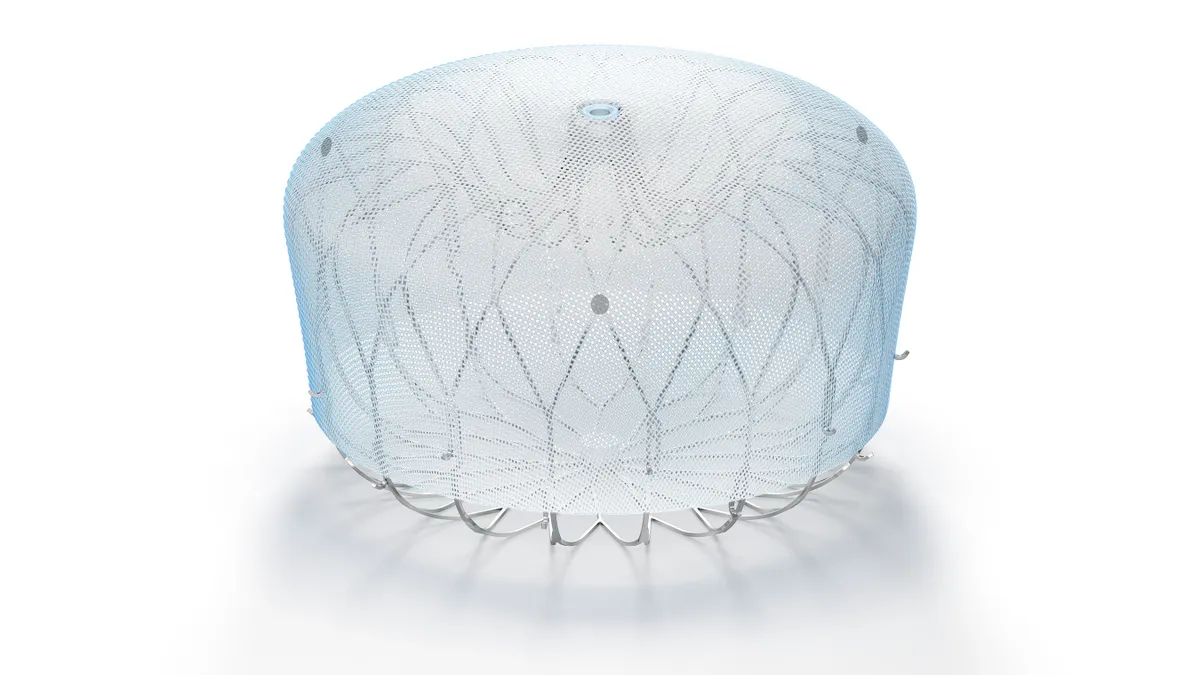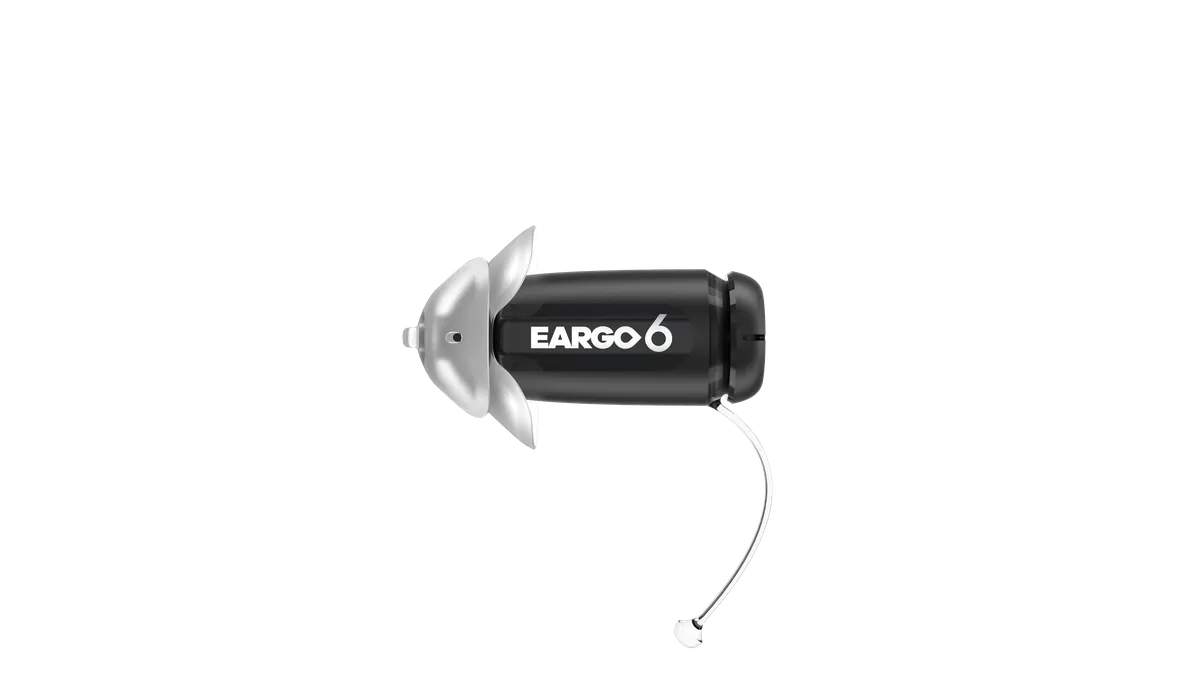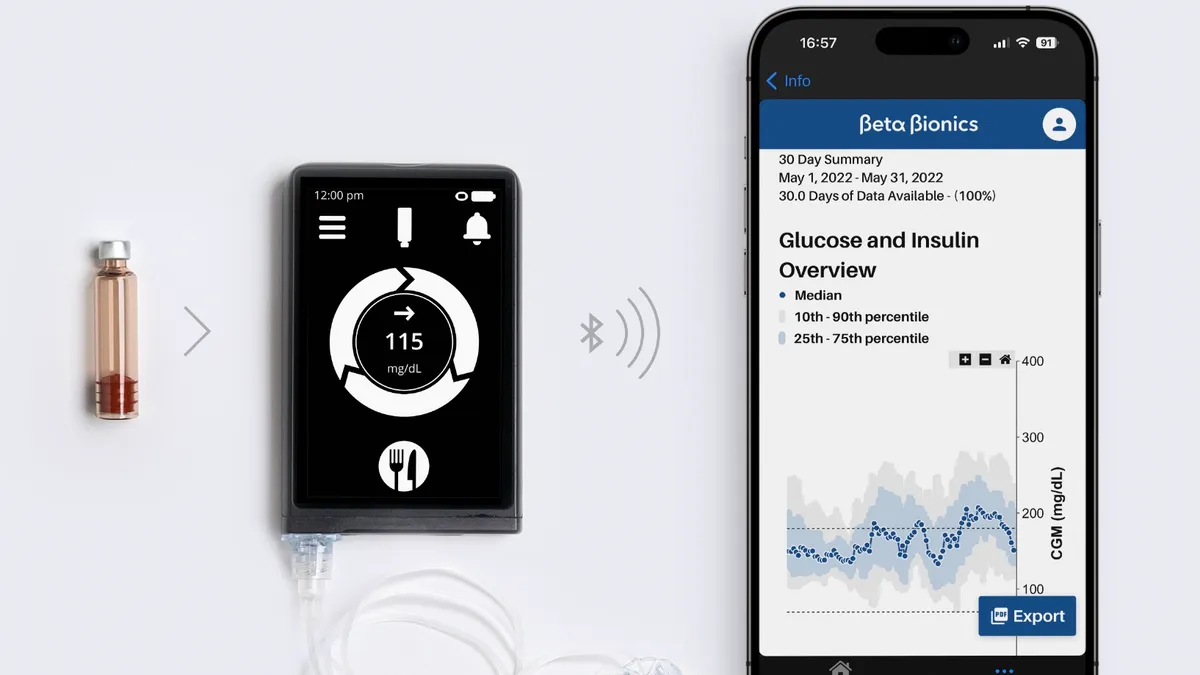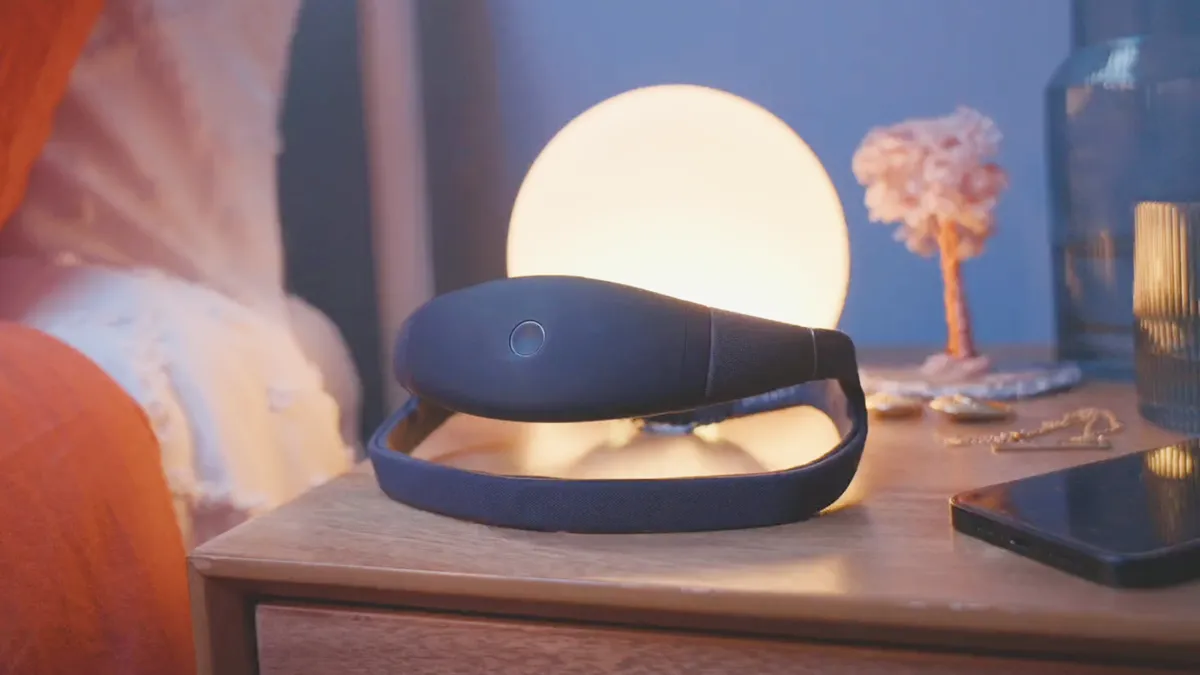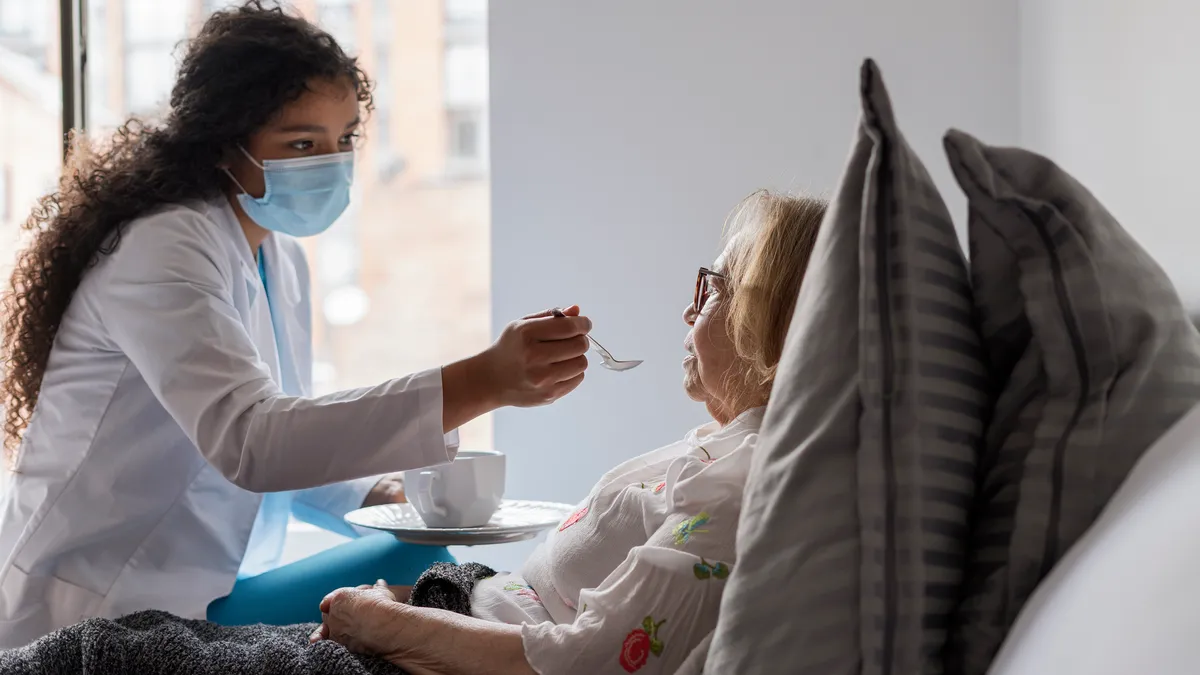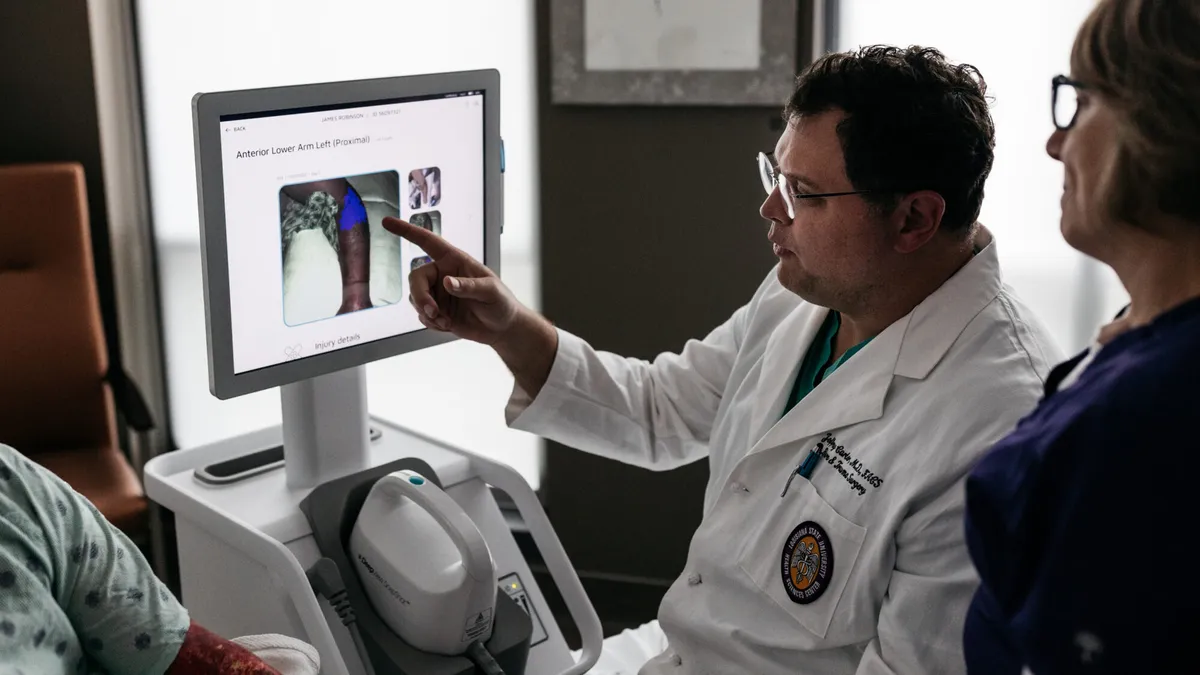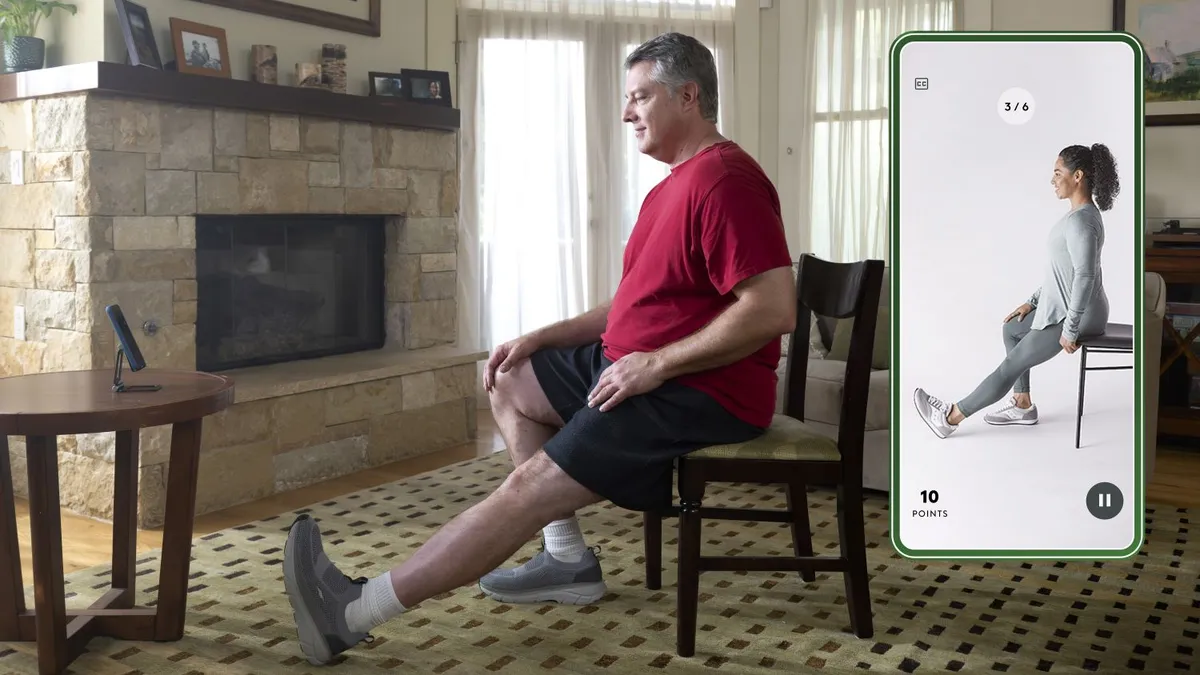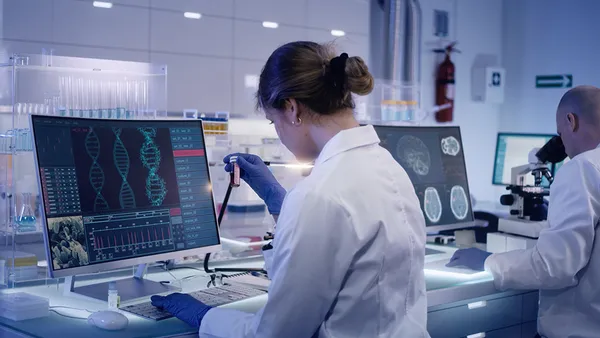As robotics companies race to challenge Intuitive Surgical, Medtronic is investing in technologies to train surgeons in preparation for the launch of its first soft tissue robot in the U.S.
In 2020, the medtech company bought a London-based startup called Digital Surgery that provides digital training and analytics for surgeons. Under the brand Touch Surgery, it offers simulations for common procedures and uses artificial intelligence to analyze surgeons’ videos, showing areas of performance improvement.
Medtronic is also developing a training program for the upcoming launch of its surgical robot. Medtronic CEO Geoff Martha told investors in November that the company plans to make a submission to the Food and Drug Administration for its Hugo robot in the first quarter of this year.
Orleigh Bogle, Medtronic’s head of medical affairs for digital surgery, talked about how access to digital tools is changing the culture around surgical training, health equity and Touch Surgery’s future.
This interview has been edited for length and clarity.
MEDTECH DIVE: What types of digital tools is Touch Surgery working with?
ORLEIGH BOGLE: We have a mobile app and virtual reality that allows surgeons to rehearse surgery step-by-step on a virtual patient. We have our Touch Surgery video platform, which allows you to safely record and store your surgical videos on the cloud, and then to extract new information for surgeons automatically through AI technology.
We also have our Touch Surgery livestream system that was recently launched earlier this year, which allows surgeons to connect to other surgeons or get support outside of the operating room.
How do these features help surgeons?
You really want to help surgeons throughout their career, and help them meet wherever their patients are. Pre-operatively, how can we help them learn and upskill and be the best for their patients? What if you need additional support in the middle of a case? How do you get that support if it’s not in the operating room?
Post-operatively, surgeons are very meticulous about reviewing their cases and reports as well. How do we make that easier and give them additional information that allows them to provide the best care for their patients?
You’ve talked about digital tools supporting health equity. How does that work?
We were part of a Safe Surgery 2020 consortium. That was a really beautiful experience for us. We partnered with some leading institutions like Johns Hopkins and Assist International. We even presented this at the General Assembly for the World Health Organization. But, essentially, this tool was used in Cambodia, Tanzania and Kenya.
In terms of equity, being able to provide this digital tool that is available to anyone, and it's for free — all you need is a smartphone — has been probably one of the most amazing experiences that I've been a part of.
You may be aware of some of the biases in medical education and the typical standards of patients that medical students learn on today. We've focused on developing virtual patients that reflect not just different demographics, so different locations, different patient habitus, if you’re old, if you’re young, big or small, right? We have that diversity so you can learn on a patient group that either you’re more familiar with or maybe that you’re less familiar with because of where you live.
What types of procedures are you working with?
Right now, our main focus is supporting our surgical portfolio. We’re focused on the general surgery space. We're developing a comprehensive program to support our Hugo launch. That’s across urology, gynecology, general surgery.
As a startup, we partnered with medical device companies from across the globe and with surgeons who are big advocates in surgical education. In our free app, we have content spanning from over 13 surgical specialties including orthopedics, plastic surgery, cardiac surgery, etc.
We've also developed a global health icon, because there are some procedures that are more tailored to certain countries that we want to also make sure that we're providing the appropriate content that meets their needs as well.
What does the training program for Hugo look like?
You can imagine that learning a large capital equipment like this, it's not just training the surgeon, it's training the surgical teams. And it's not just technical training that they need support on. There's also procedural and team communication. Where we're focusing is developing an e-learning component that allows surgeons to learn, be familiarized with the system, with the buttonology, even allow them to better appreciate how Hugo would set up and work in their operating room virtually.
You talked about changing the culture of training. What kinds of changes are you seeing and what do you hope to see in the future?
When I was in Canada, I was in the operating room with a customer. He's operating with his fellow, and he turns to his fellow and he says, ‘Make sure you know these steps really, really well, because the patient in the afternoon is yours.’
Immediately after the case, the attending surgeon stops recording, uploads the video, shares it, and within seconds, the video is available, ready for the trainee to review.
When we were a startup, and we started this, the steps that a trainee or a fellow would need to take to get the video back, we’re talking days. For it to happen within seconds, that is a huge game changer.


